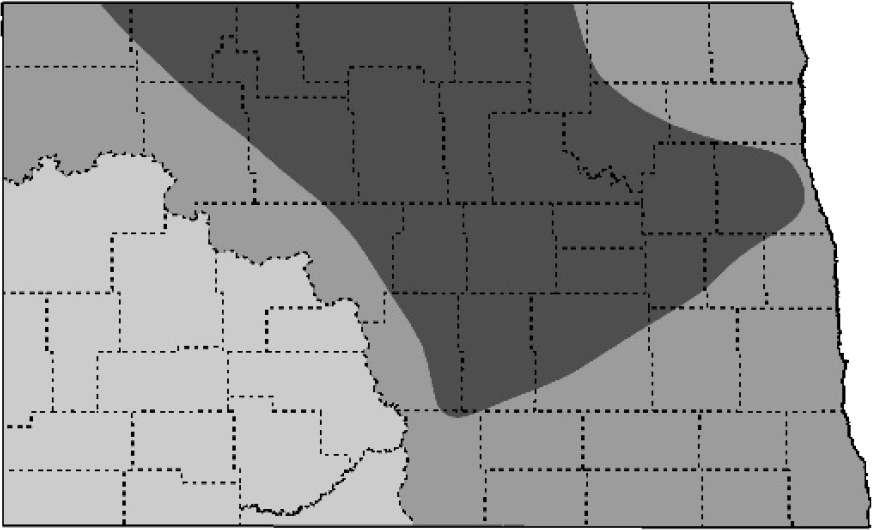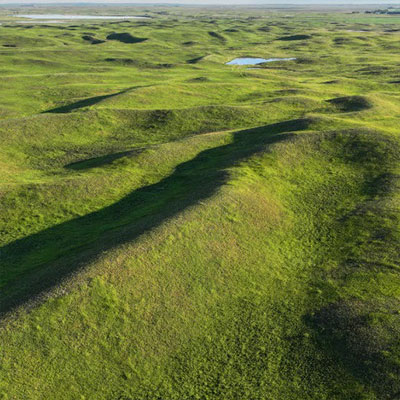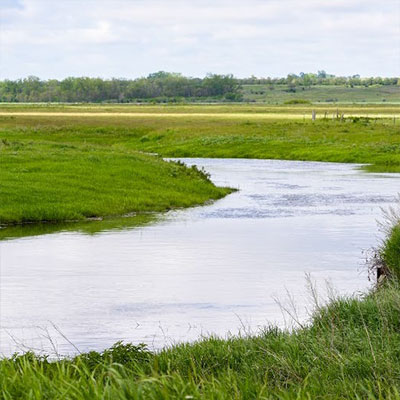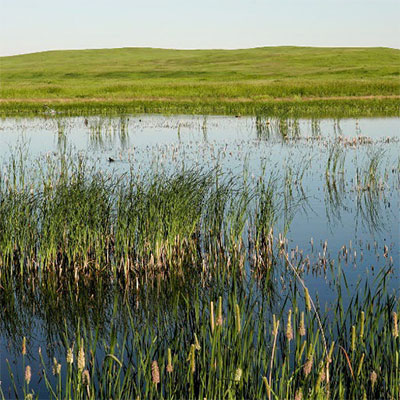LeConte’s Sparrow

NDGF
L 5”, WS 6.5”, 0.46 oz. Pale, yellow-brown, fine streaks along the breast and sides, and a white stripe on crown.
Status in North Dakota
Occurs in North Dakota from mid-April to mid-October. Peak breeding season late May to mid-July.
Reason for SWAP Designation
At-risk, ND range important (SGCN b.).
ND ranks 1st out of 6 states for highest percent of the global population (4.47%) during the breeding season (eBird).
The LeConte’s Sparrow is declining, and the population has decreased 61% since 1970.
ND has high stewardship responsibility for this species.
Threats
Loss of grassland and loss of grassland/wetland complexes Loss and degradation of wetlands, drainage and wetland consolidation.
Hydrologic shifts in wetlands of the PPR due to wetland consolidation and drainage, climate and land use changes (i.e. lakeification).
Classified as climate-endangered, Le Conte’s Sparrow is projected to lose more than half of its current distribution by 2050, with no net gains of new areas (Audubon).
Presence is affected by the yearly moisture conditions.
Increased woodland cover may negatively affect this species.
Research and Monitoring
Habitat requirements are generally known.
Little is known about reproductive success, annual adult survival, or fledgling survival.
Additional information is needed on migration and wintering behaviors.
The Breeding Bird Survey, eBird and Partners in Flight Databases are key sources of information on distribution and population trends.
Management Recommendations
- Protect and conserve large, intact tracks of native prairie/unbroken grassland and tame grassland.
- Reconstruct or restore grassland adjacent to existing tracts of native prairie/unbroken grassland.
- Graze or hay expired CRP. The density of LeConte’s Sparrows is 100% lower in CRP fields converted to cropland, but effects are less if expired CRP is converted to grazed grassland (-87%) or hayland (-75%).
- Grazing or burning is crucial to maintaining open, diverse grasslands.
- Delay mowing or haying until August 1.
- Avoid or minimize placement of development (e.g. energy, housing, utility lines) or other human infrastructure in native prairie/unbroken grassland.
- Protect and restore wetlands, including the wetland margins, and within grassland landscapes.
- Use prairie cordgrass and other tall vegetation when restoring wetland buffers.
- Use fencing to exclude cattle from wetlands and wetland edges. Develop a livestock watering system instead of direct watering.





